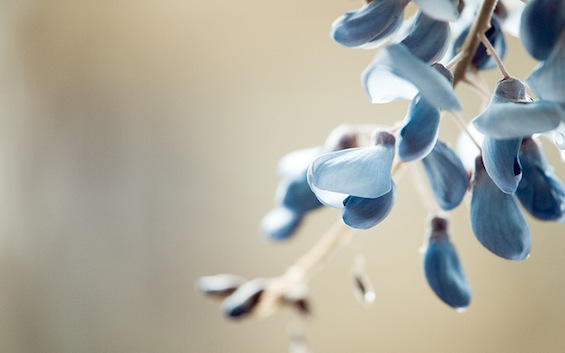
The Best Haiku Resources
Recently, I ordered a handful of what appeared to be the “top” books on haiku, from the library. I won’t mention which books made my eyes glaze over post-haste. Rather, I’ll share what seemed to me to be one of the best haiku resources in the pile.
Haiku in English: The First Hundred Years is definitely a top resource. It includes excellent poems arranged chronologically, so you can see the unfolding of the form over time in (American) English. It has an amusing and informative introduction by Billy Collins. And it sports a brief history of haiku that touches on such subjects as:
2. The origins of haiku in English
3. The first haiku written in English—unless you count the “found haiku” of Emily Dickinson. Jack Kerouac claimed there were “a million haikus in the Great Emily Dickinson.” (We forgive Kerouac for adding the unnecessary “s” to haiku to pluralize it, because we are more interested in the intriguing possibility of #huntinghaiku)
4. The Beats and haiku
5. The Haiku Community
6. The globalization of haiku
7. The next hundred years
Haiku in English is easy to read and provides enough food for thought on how to construct haiku that it would make a great addition to your personal or classroom library. Beyond that, you could easily read a poem a day (which we highly recommend), and let poetry become something that not only makes you a better writer but also perhaps a better navigator of life.
Here are some of my absolute favorite poems from the volume:
Best Haiku (Or, the Ones I Loved)
In a Station of the Metro
The apparition of these faces in the crowd;
Petals on a wet, black bough.
—Ezra Pound
1
Among twenty snowy mountains,
The only moving thing
Was the eye of the blackbird.
—Wallace Stevens, from Thirteen Ways of Looking at a Blackbird
A deep gorge…
some of the silence
is me
*
One last look
through the old apartment
a dry sponge
*
The spell check questions them:
Majdanek, Sobibor,
Belzec…
—John Stevenson
Missing a kick
at the icebox door
It closed anyway
—Jack Kerouac
day after day
bits of a chained bicycle
disappear
—Annie Bachini
look at the red throat
of the hummingbird—then tell
your story again
—Ronald Baatz
mending his fence
the neighbor’s mouth
full of nails
—Patricia Prime
a line borrowed
from another poet
spring rain
—Paul M.
If you’re a fan of haiku, this book might be for you. And if you’ve never given much thought to haiku, it might also be for you. I was surprisingly inspired by giving it a read.
Photo by Matthias Rhomberg, Creative Commons, via Flickr. Post by L.L. Barkat, author of the collection Love, Etc: Poems of Love, Laughter, Longing & Loss.
__________________________

“I require all our incoming poetry students—in the MFA I direct—to buy and read this book.”
—Jeanetta Calhoun Mish
- Poetry Prompt: In the Wild Secret Place - January 6, 2025
- Journeys: What We Hold in Common - November 4, 2024
- Poetry Prompt: My Poem is an Oasis - August 26, 2024
Donna says
Thanks for the great resource…. 🙂
Love this one:
mending his fence
the neighbor’s mouth
full of nails
—Patricia Prime
L. L. Barkat says
I loved the irony of that one. I think I never understood just how sweetly ironic haiku can be (probably because I’d not spent time reading the best of them).
Good haiku, it seems to me, is actually really hard to write. As they note in the book, there needs to be a strong “Aha” moment (which I believe is true of all good poetry, but it is seriously difficult to accomplish in 3 lines).
Donna says
I agree… it is really hard. Something unspoken is said. It’s fun to try and match syllables and all, and so it’s a good first form but when I tried to really get at what you call that “a-ha” with the Library Hotel contest I found it really, really challenging. I think I might get that book from our library and spend some time with it.
SimplyDarlene says
ah! this was my favorite too… because of all you ladies have discussed.
Megan Willome says
I love that you titled your list “Best Haiku (Or, the Ones I Loved).” Yes, that’s what it’s all about.
L. L. Barkat says
Ha. You like that? 🙂
I do think there is a basic standard for good haiku, as with any poetry (something about sound, rhythm, images, language, and the “aha”). But after that… it’s all taste. The collection contained some dark poems which I didn’t like as much, though I could assent that they are good poems.
Donna says
Well, I got a little carried away and so combined Heather’s prompt with musings from your post for a Baby Face Photo Play Haiku in English. http://thebrightersideblog.blogspot.com/2014/05/permutations.html?spref=fb
SimplyDarlene says
these days i’m smitten
quite a lot with the haiku
form simplicity
I’ve been summarizing books of the bible and chapters of books via haiku. The conservative word usage is a struggle for a jabber-walkie like me. Sometimes it hurts. Mostly, it frees.
Thanks for this piece!
Richard Maxson says
Great post and examples of Haiku! I loved that you included a stanza from Thirteen Ways of Looking at a Blackbird, one of my favorite poems by Stevens. Writing Haiku is meditation for me, it seems I really have to get my head in a special place, different than when writing other poetry. The link to the wonderful infographic was very informative. Haiku is difficult but accessible. Seems a much better place to start introducing middle and high school students to poetry, rather than Beowulf or even Shakespeare.